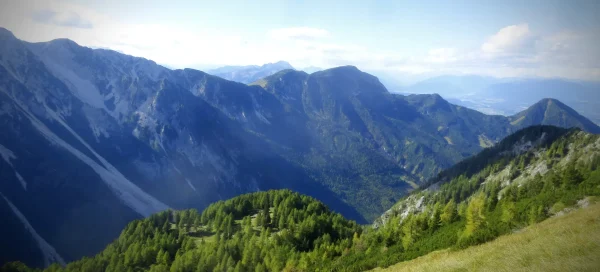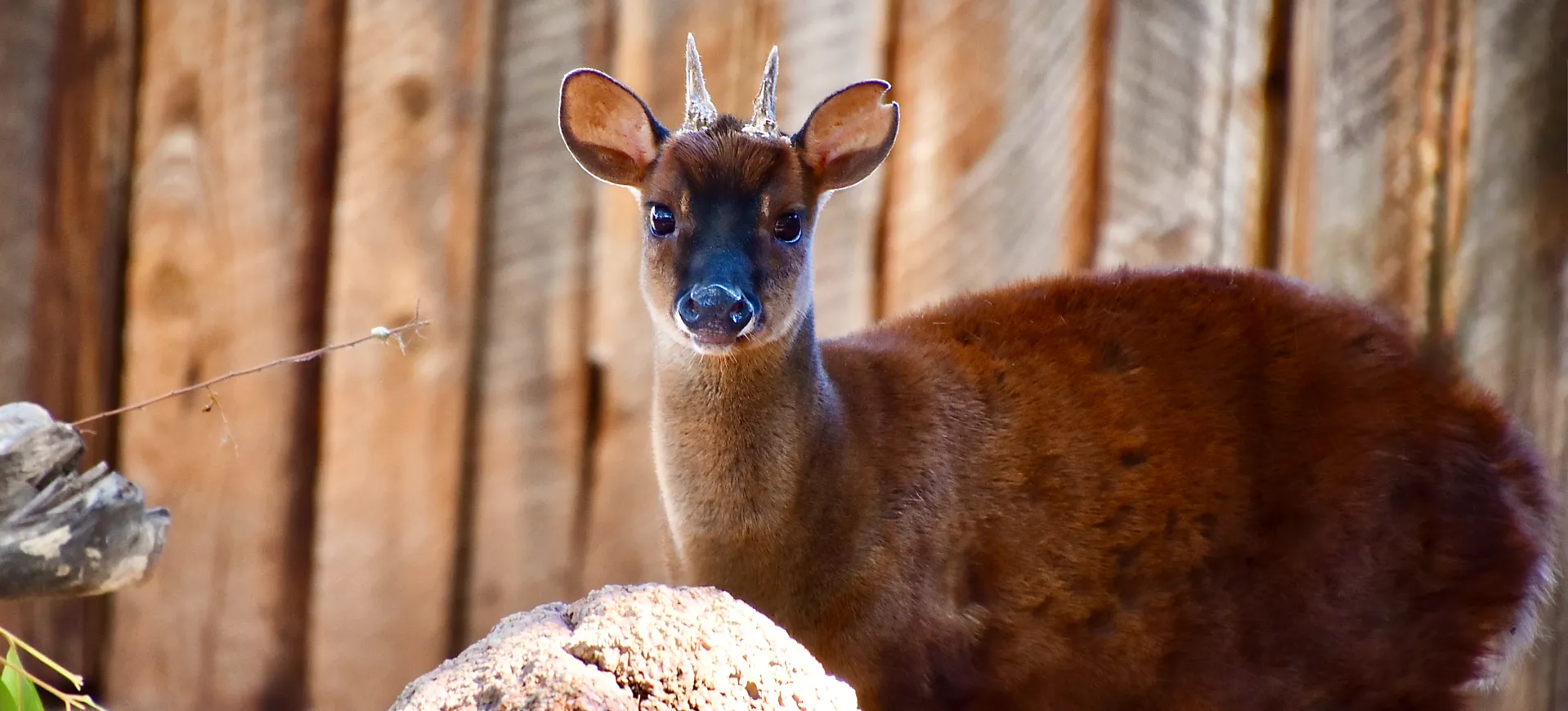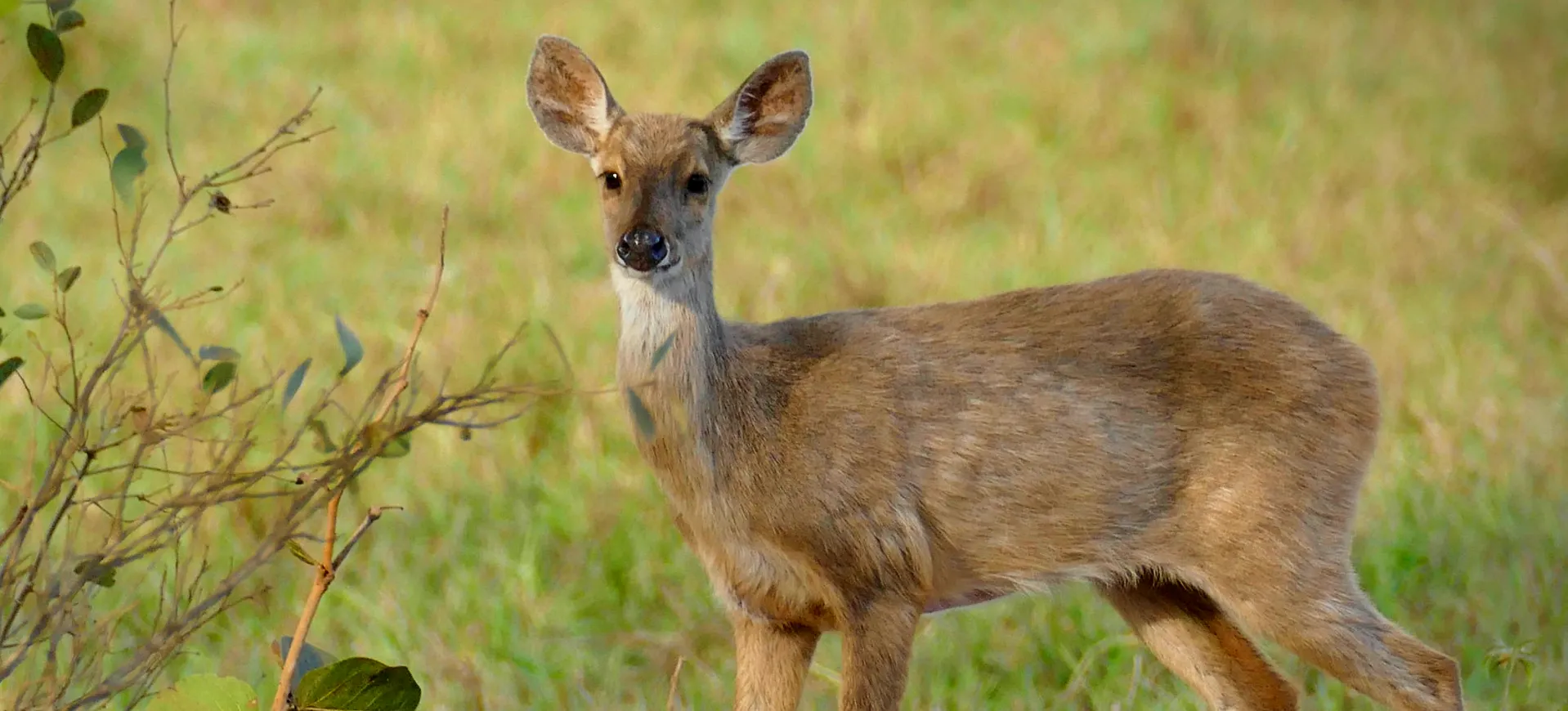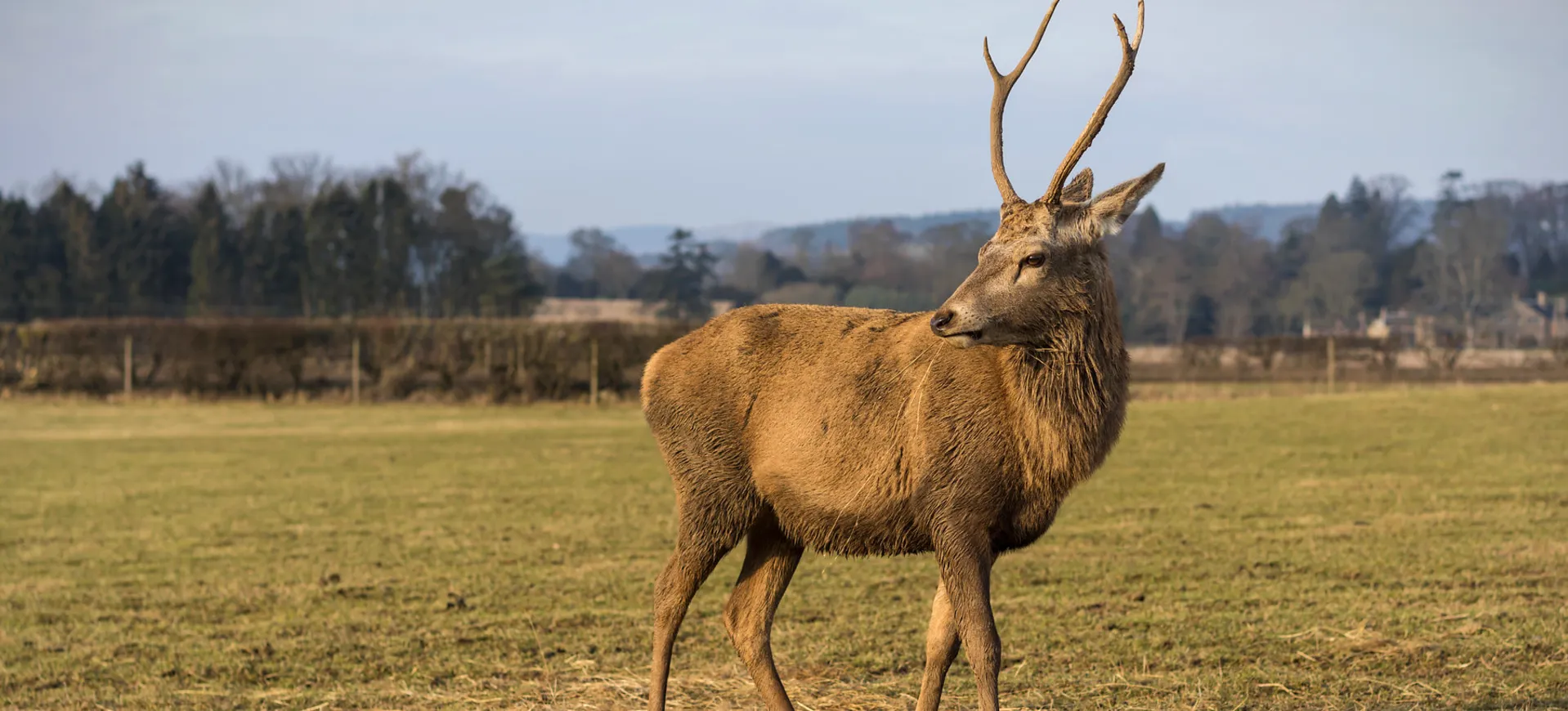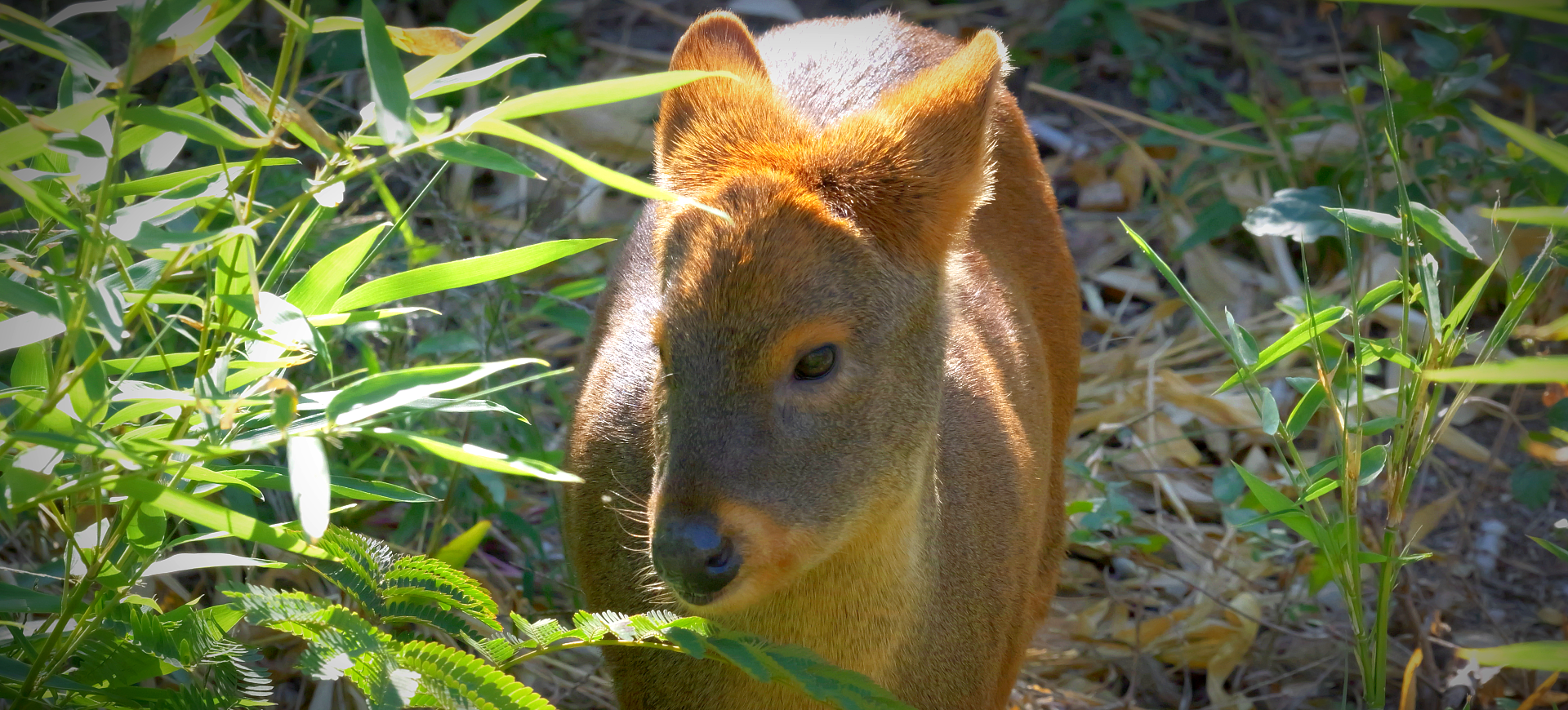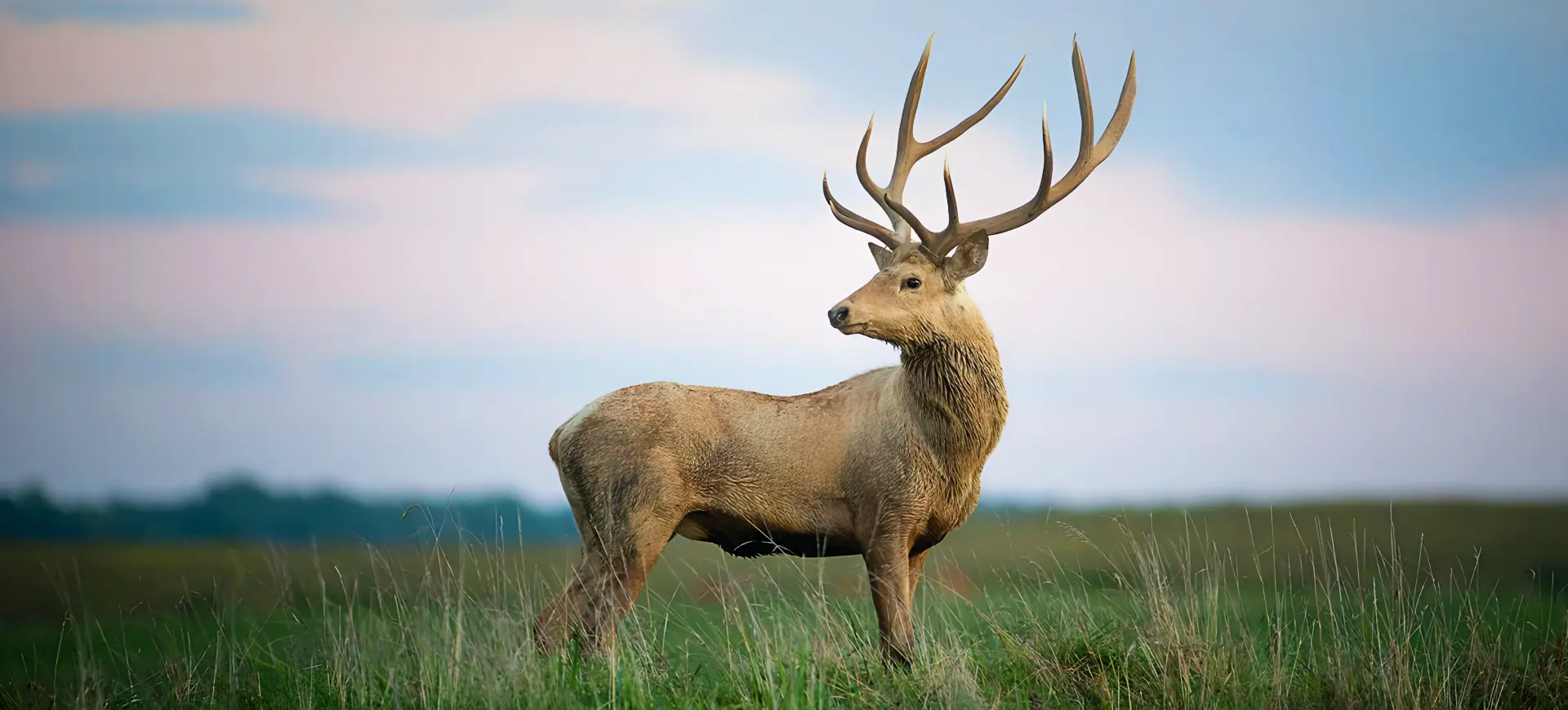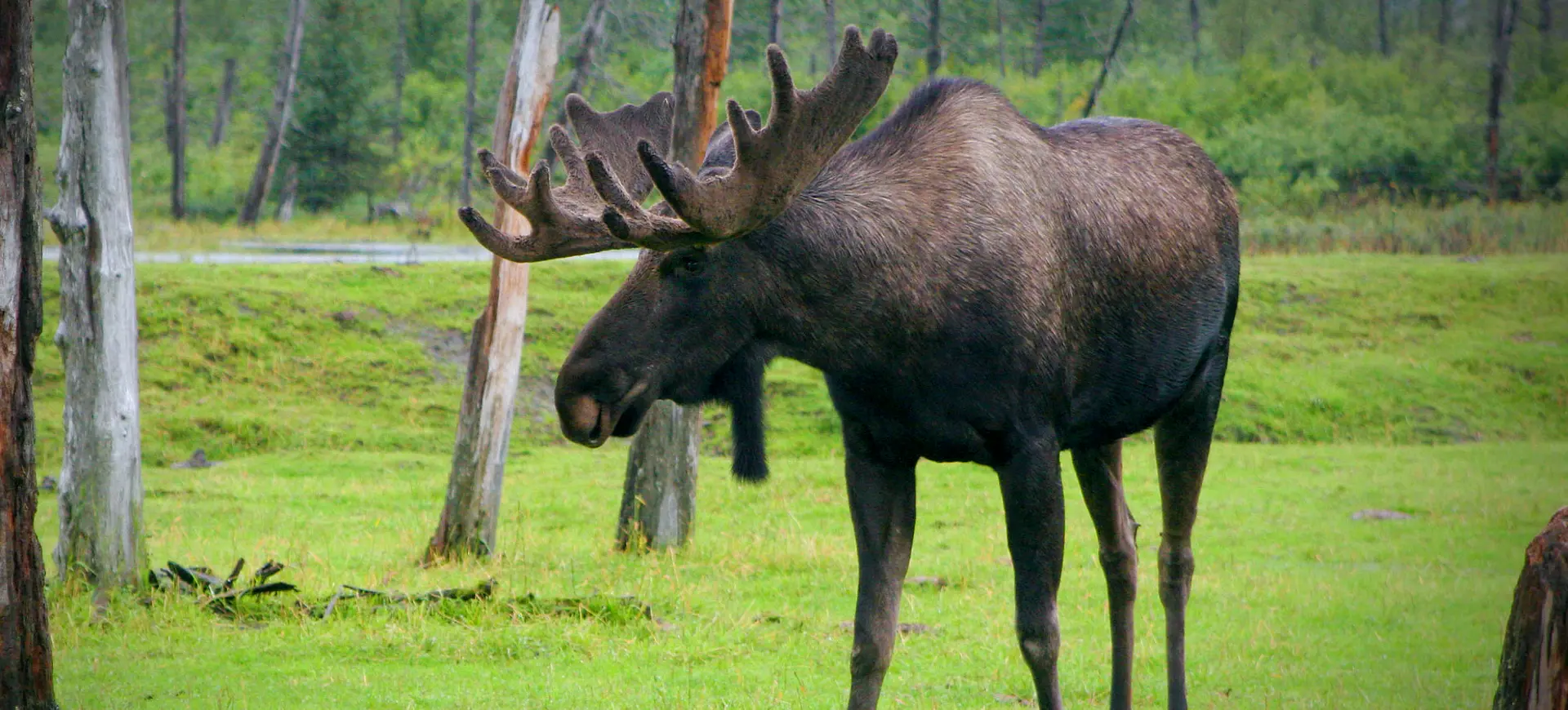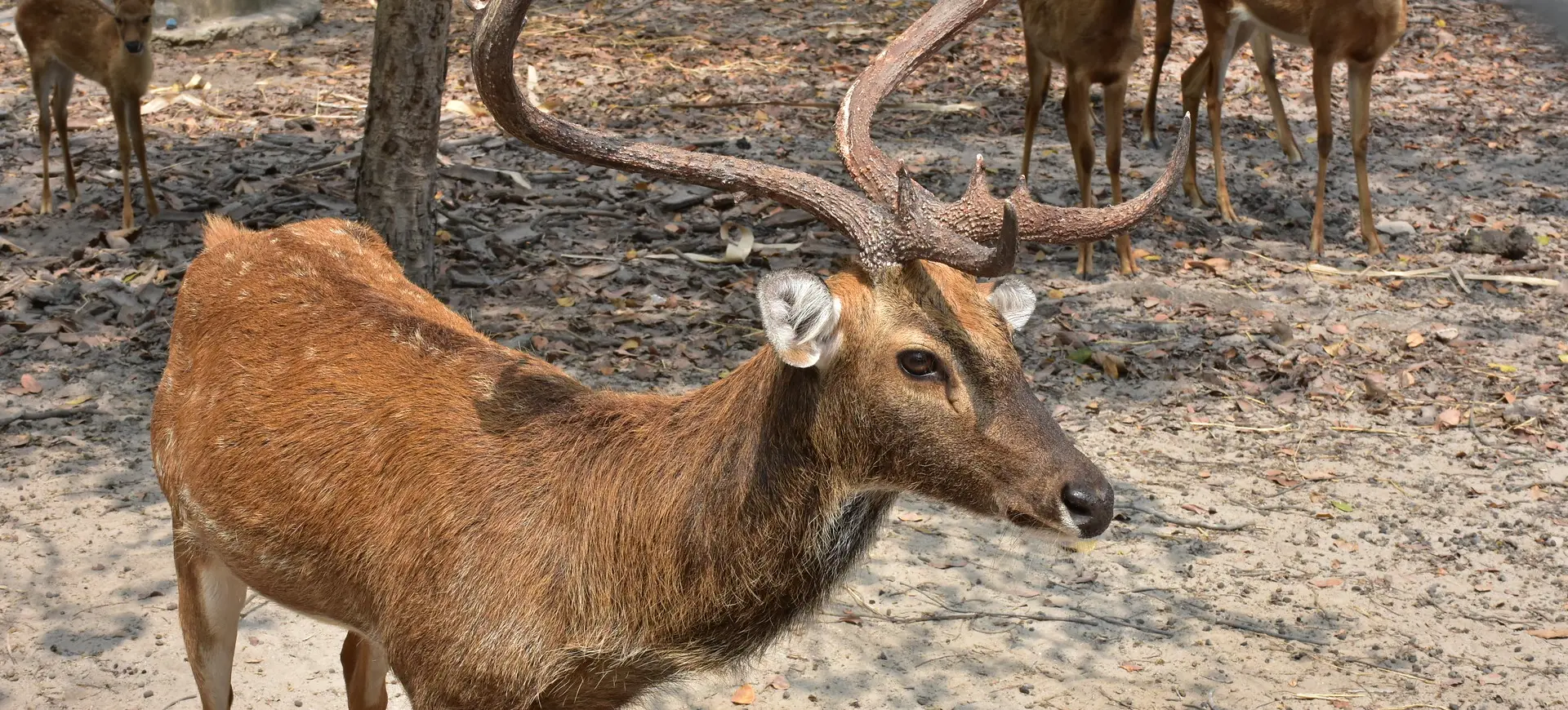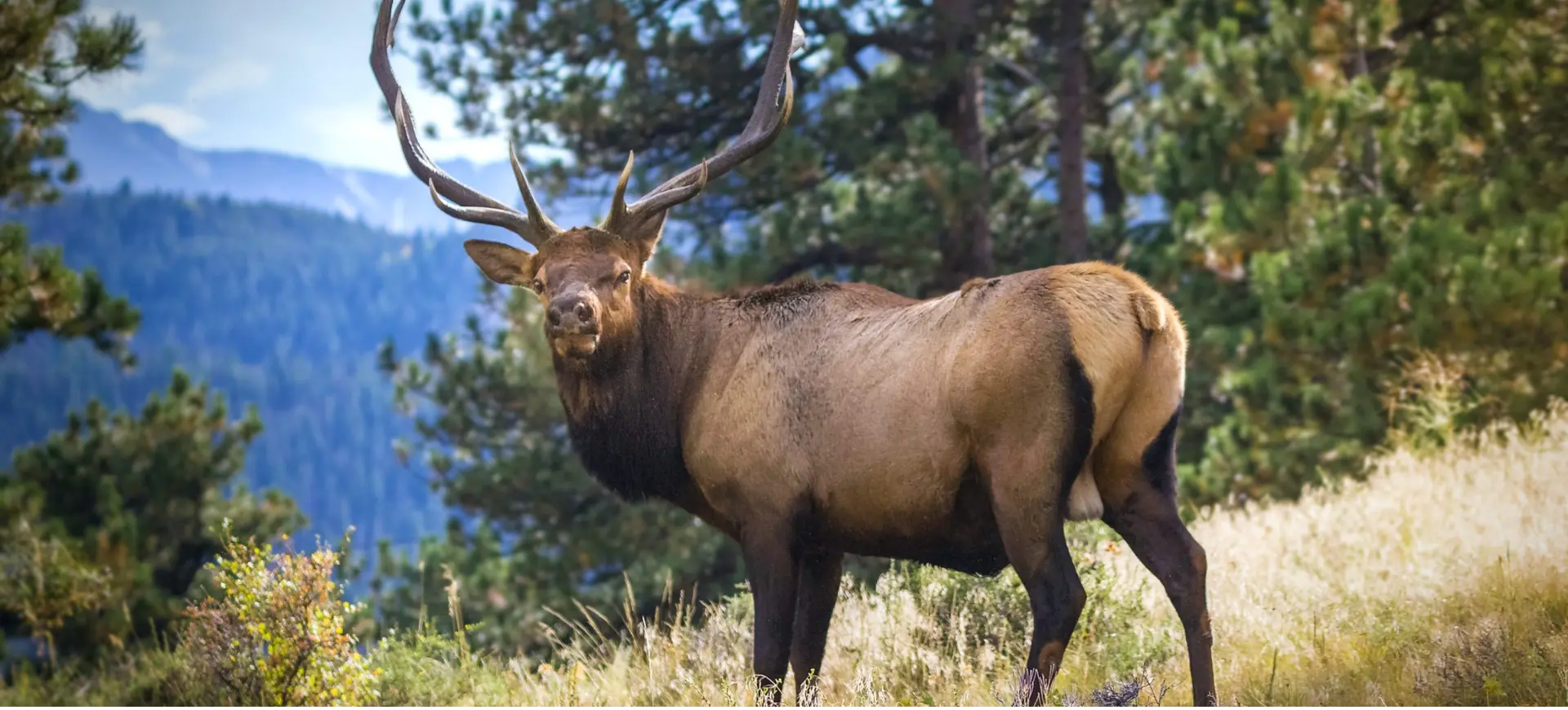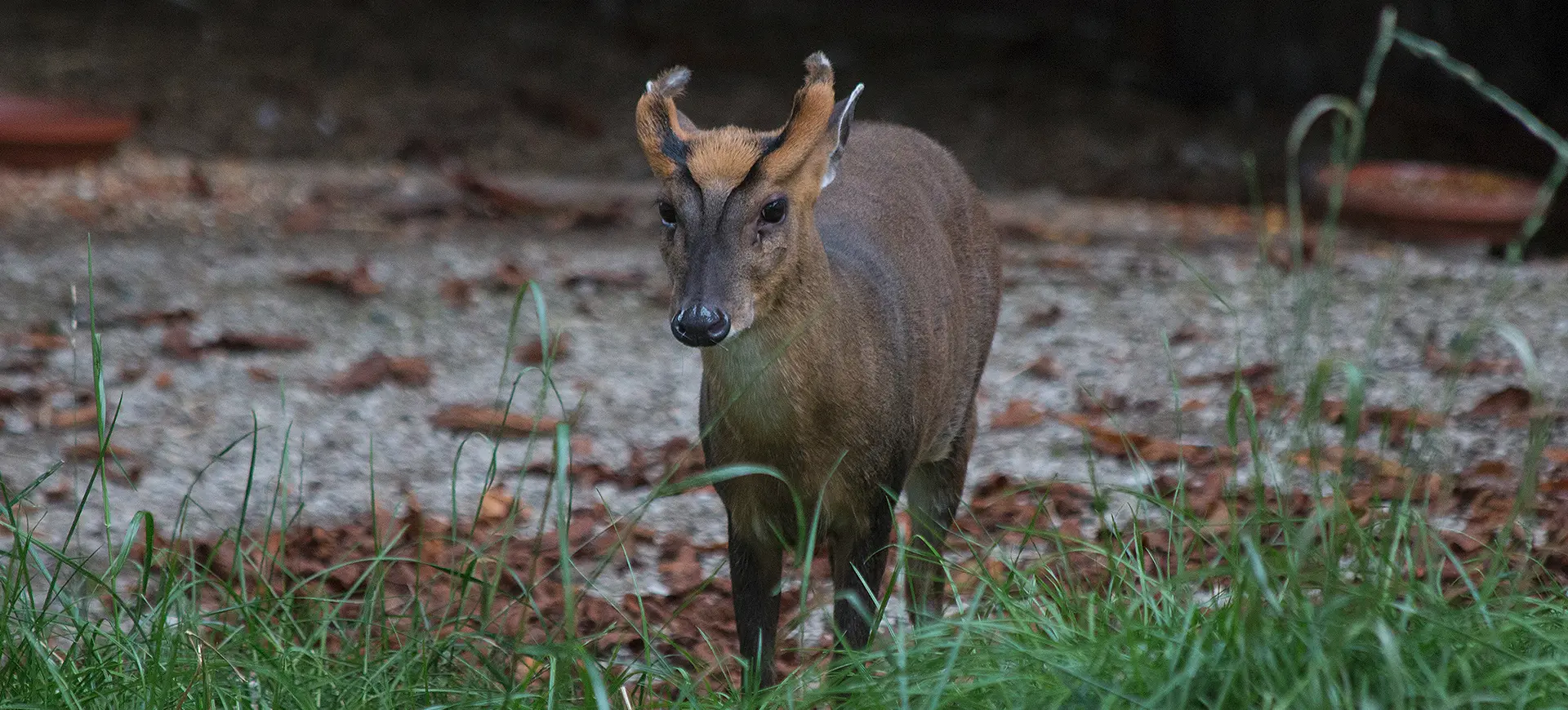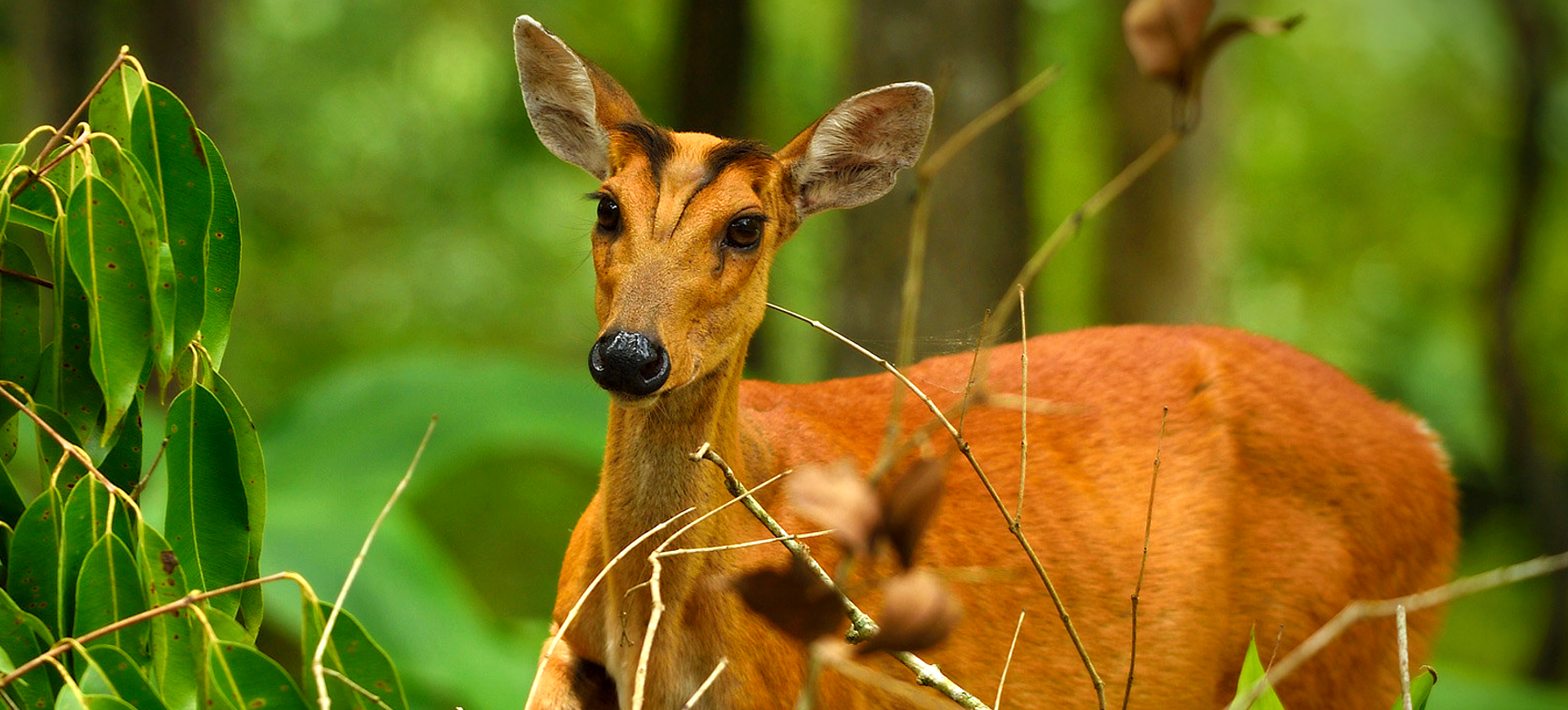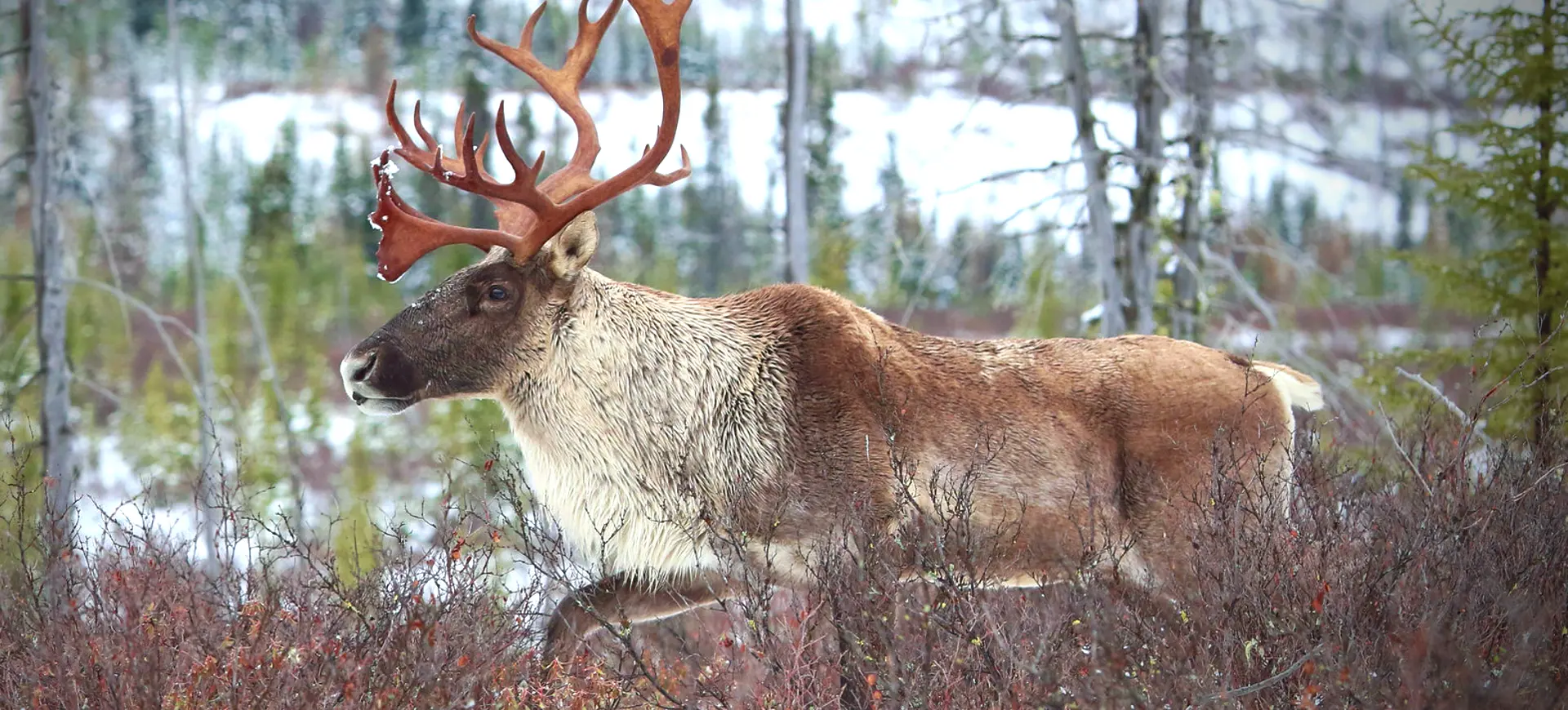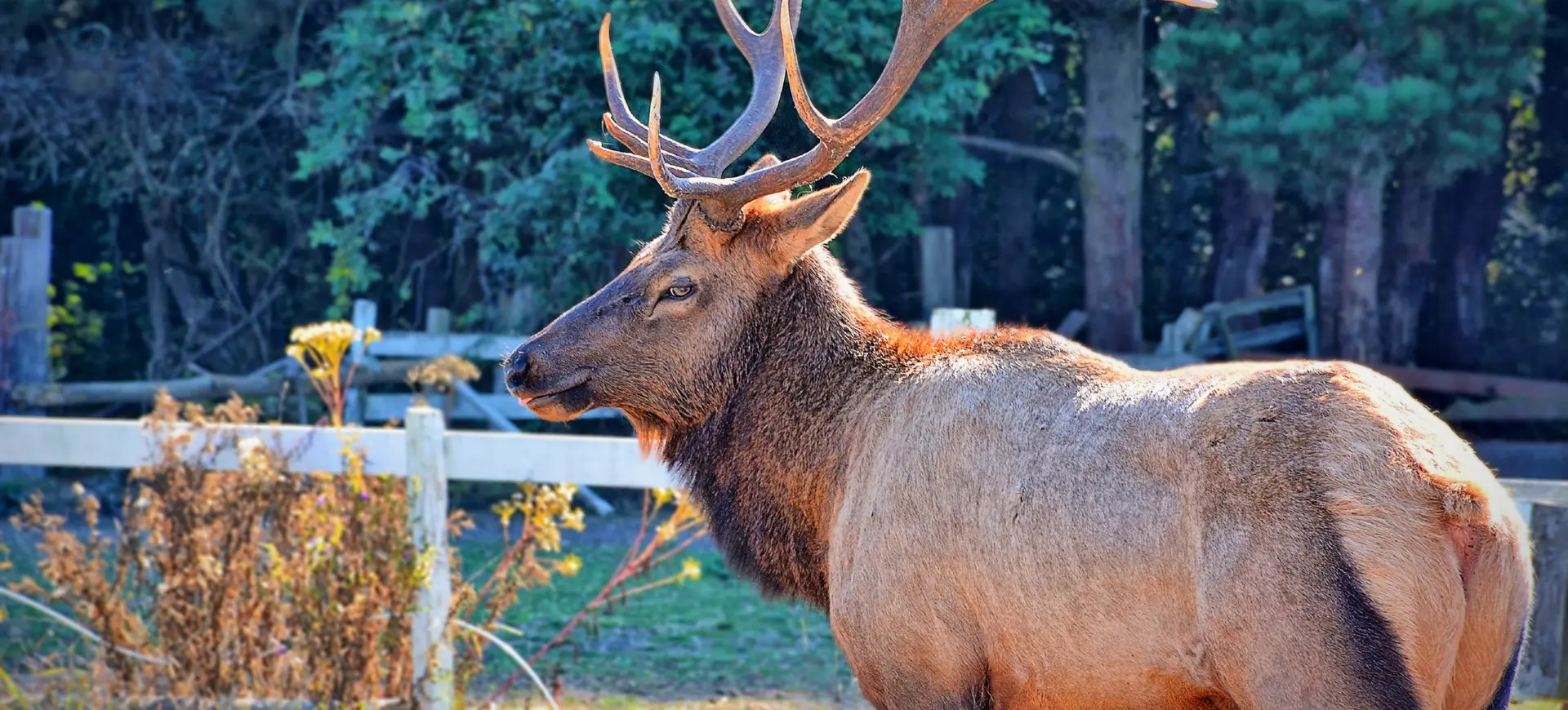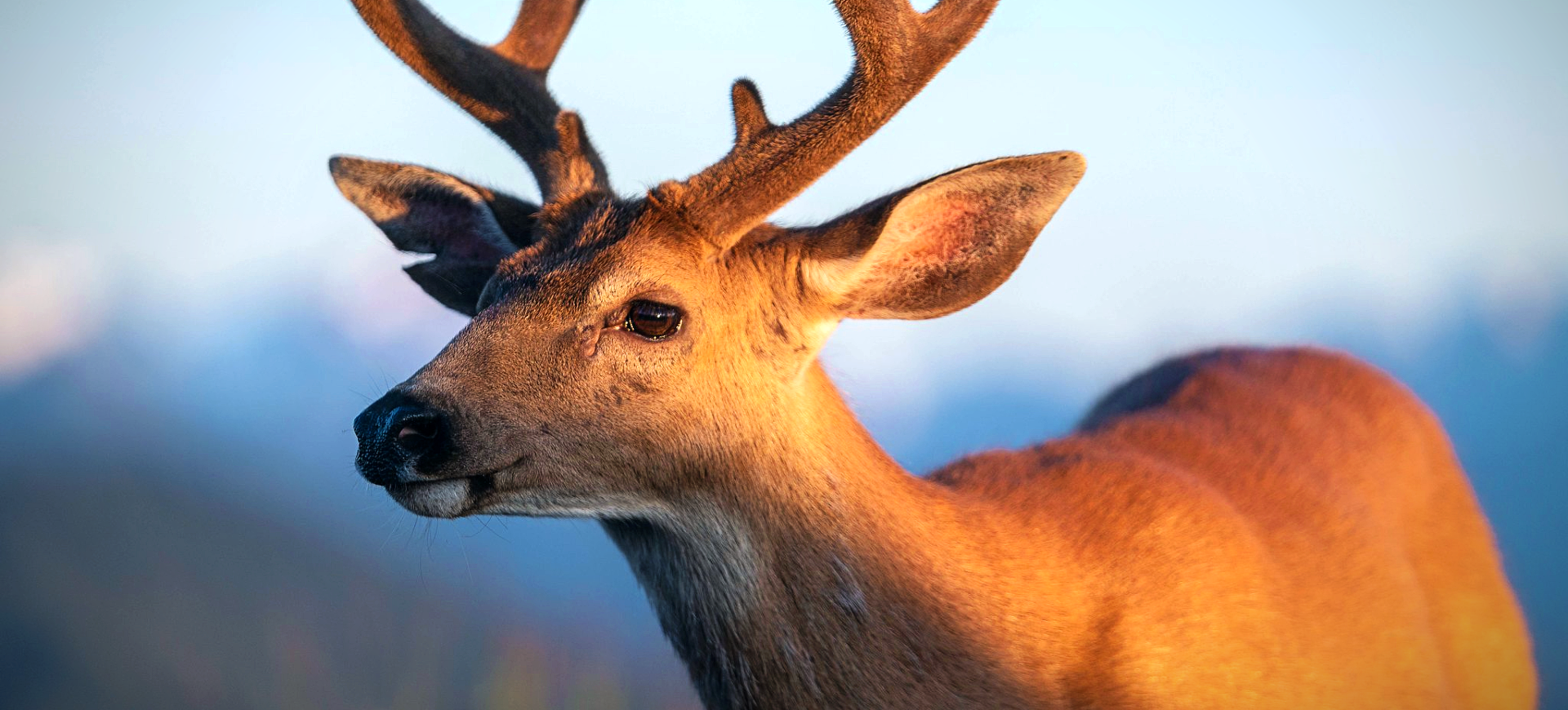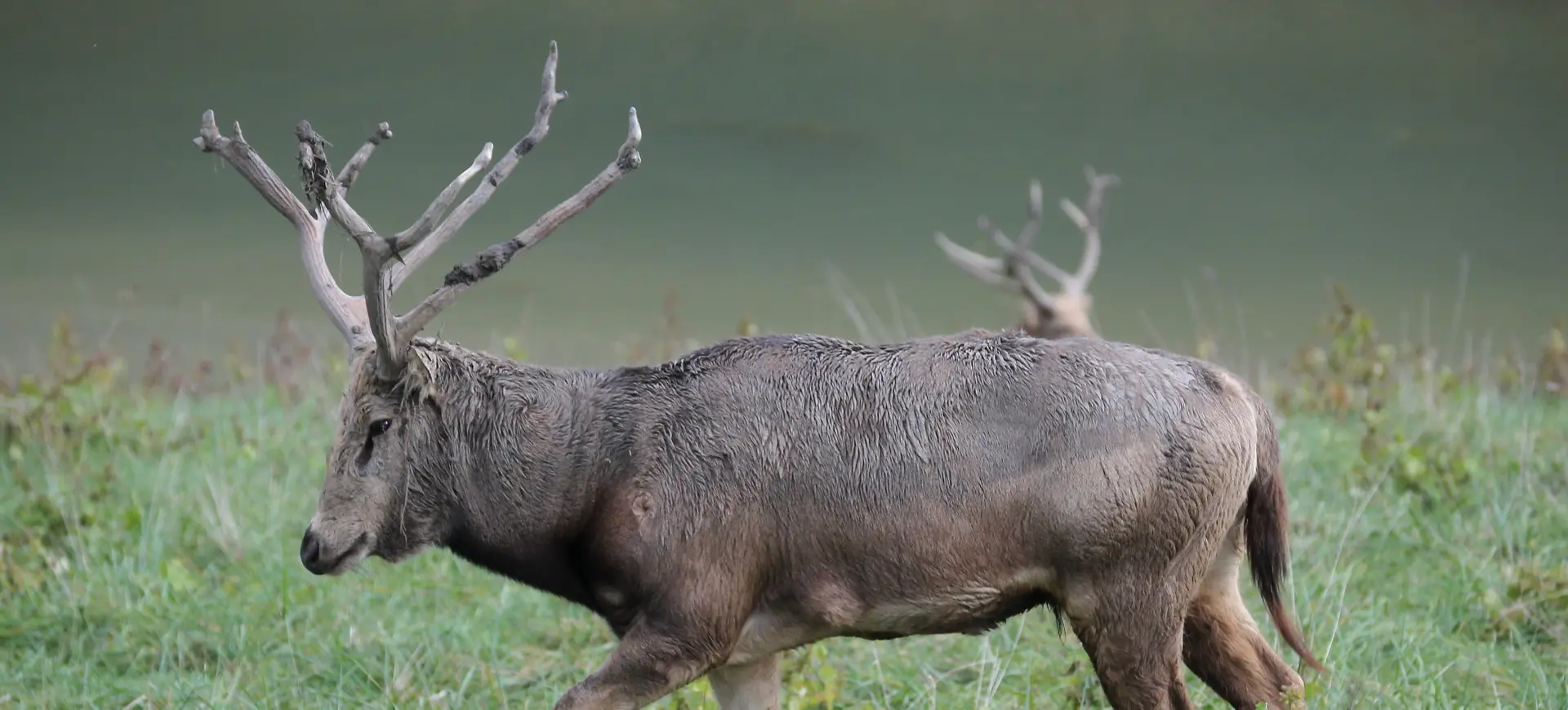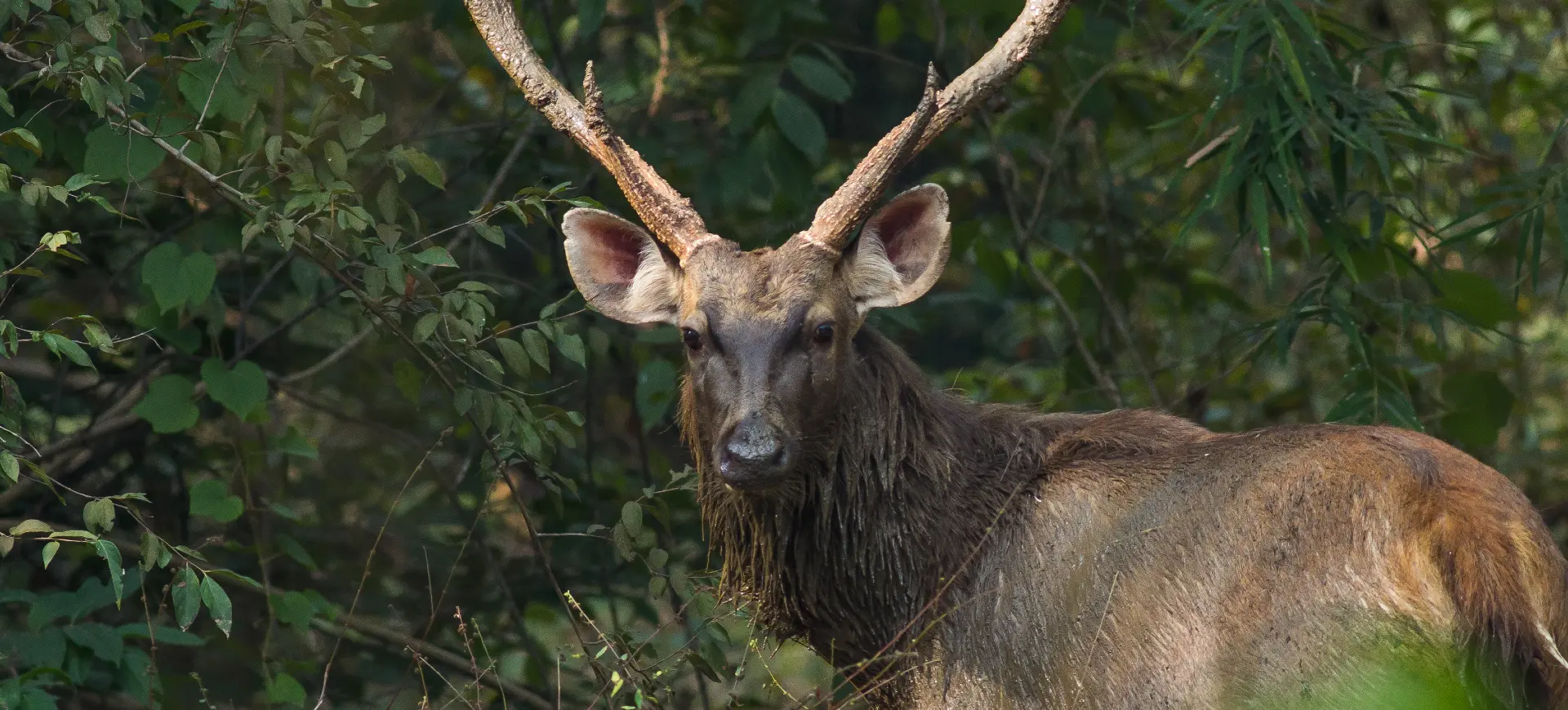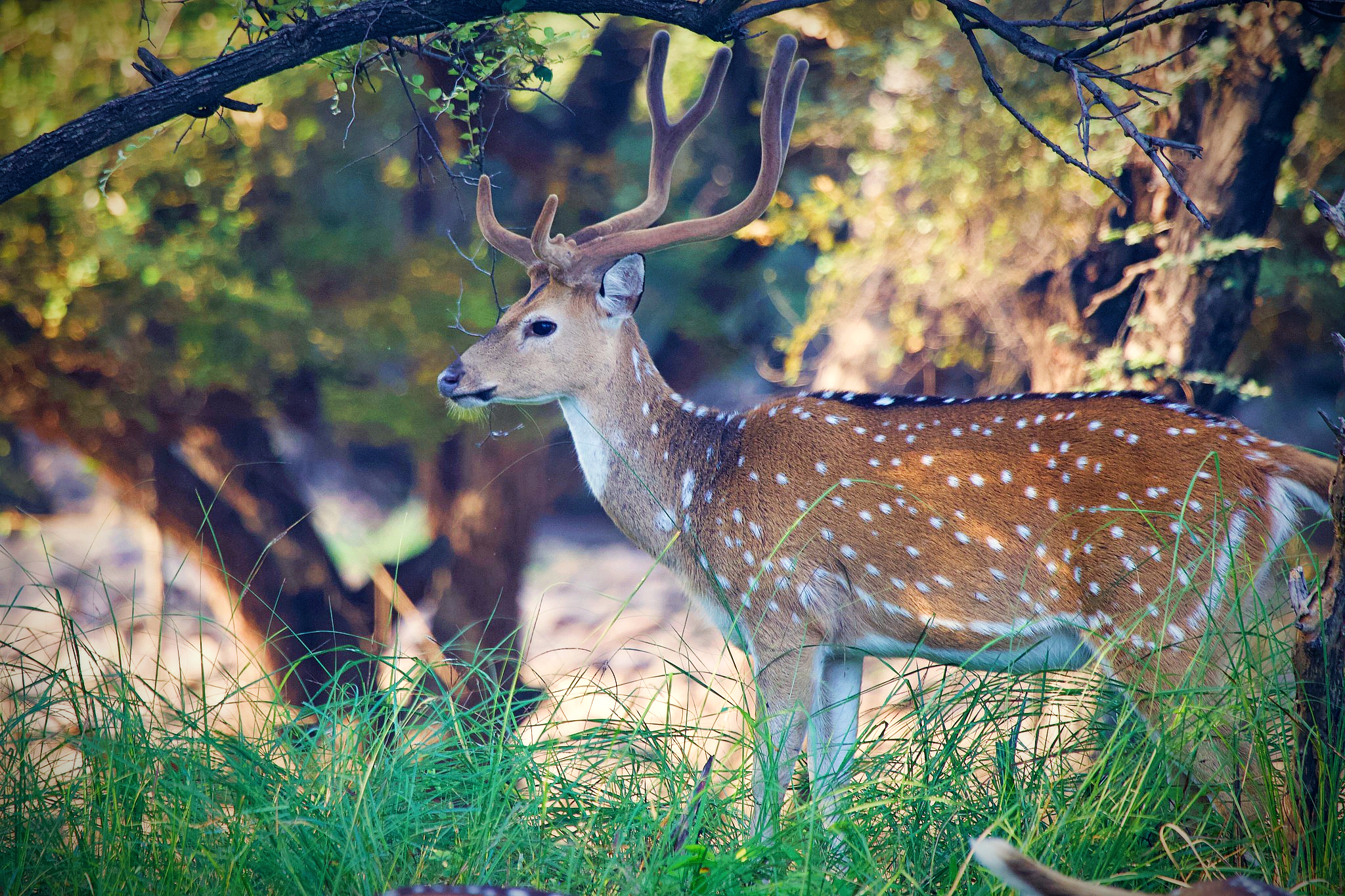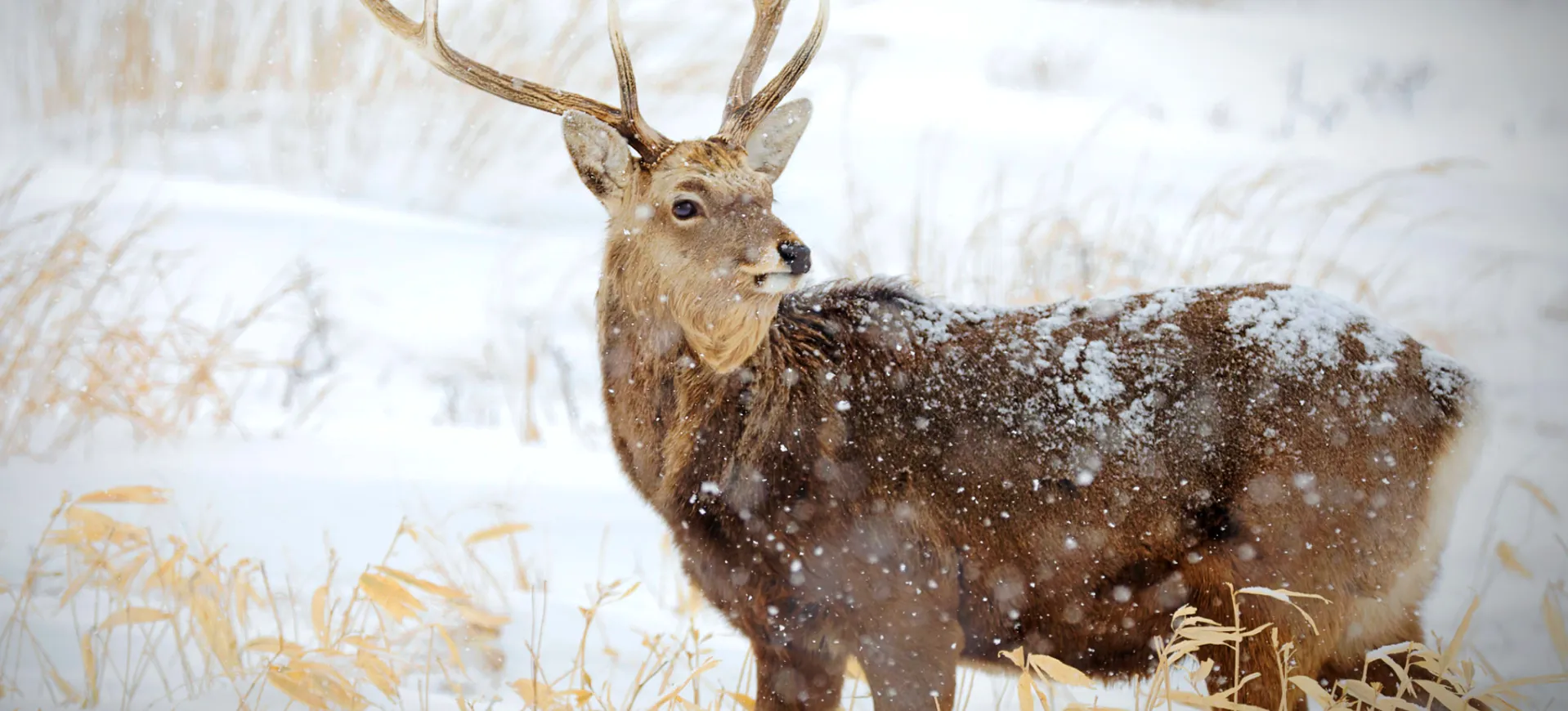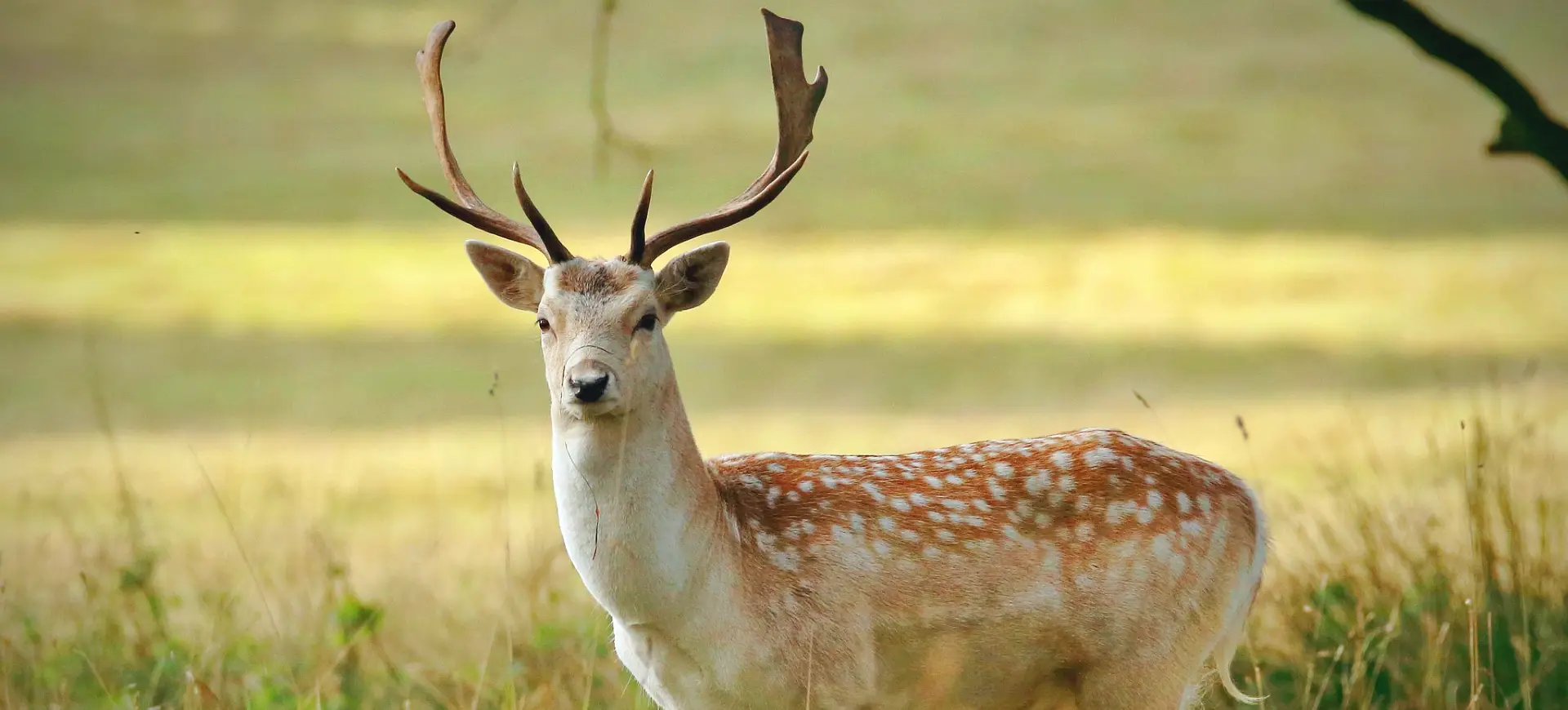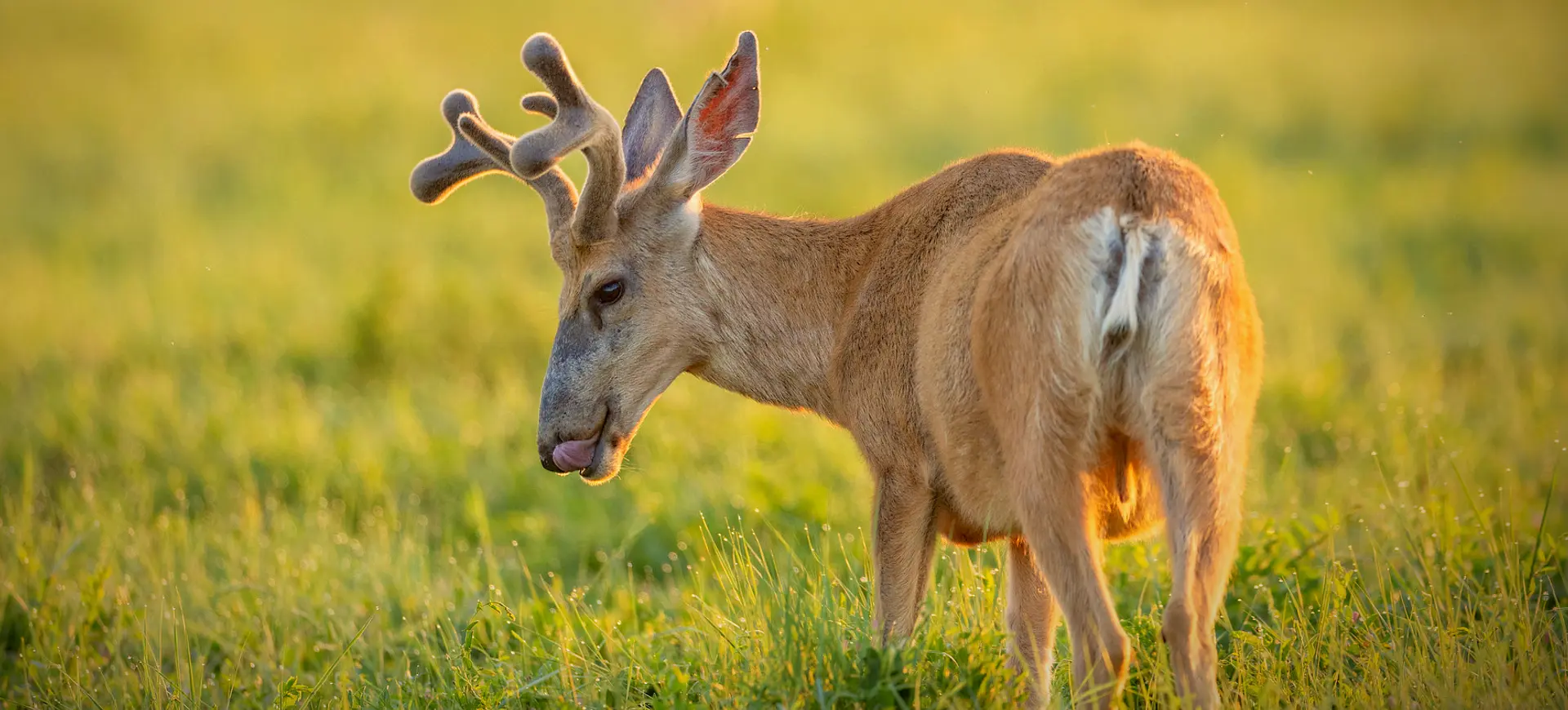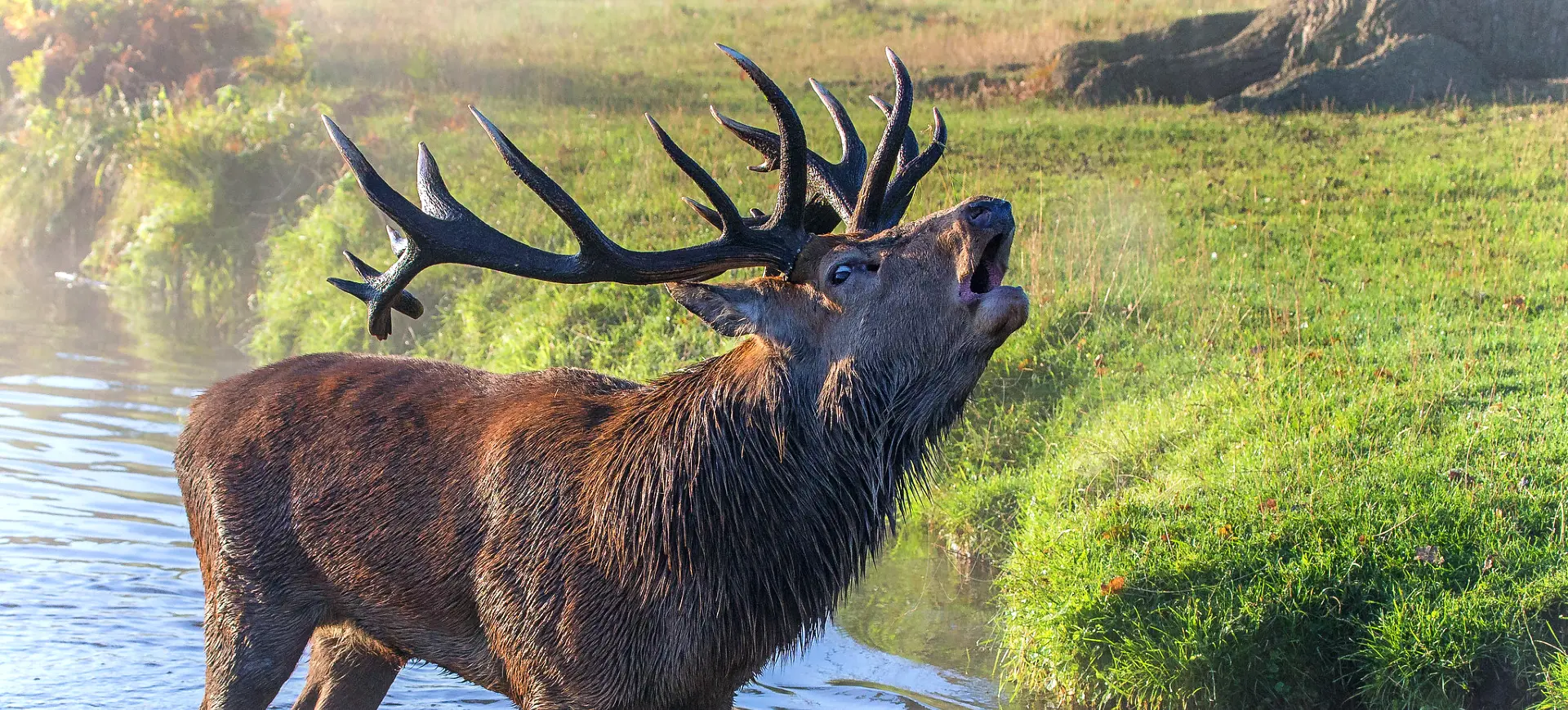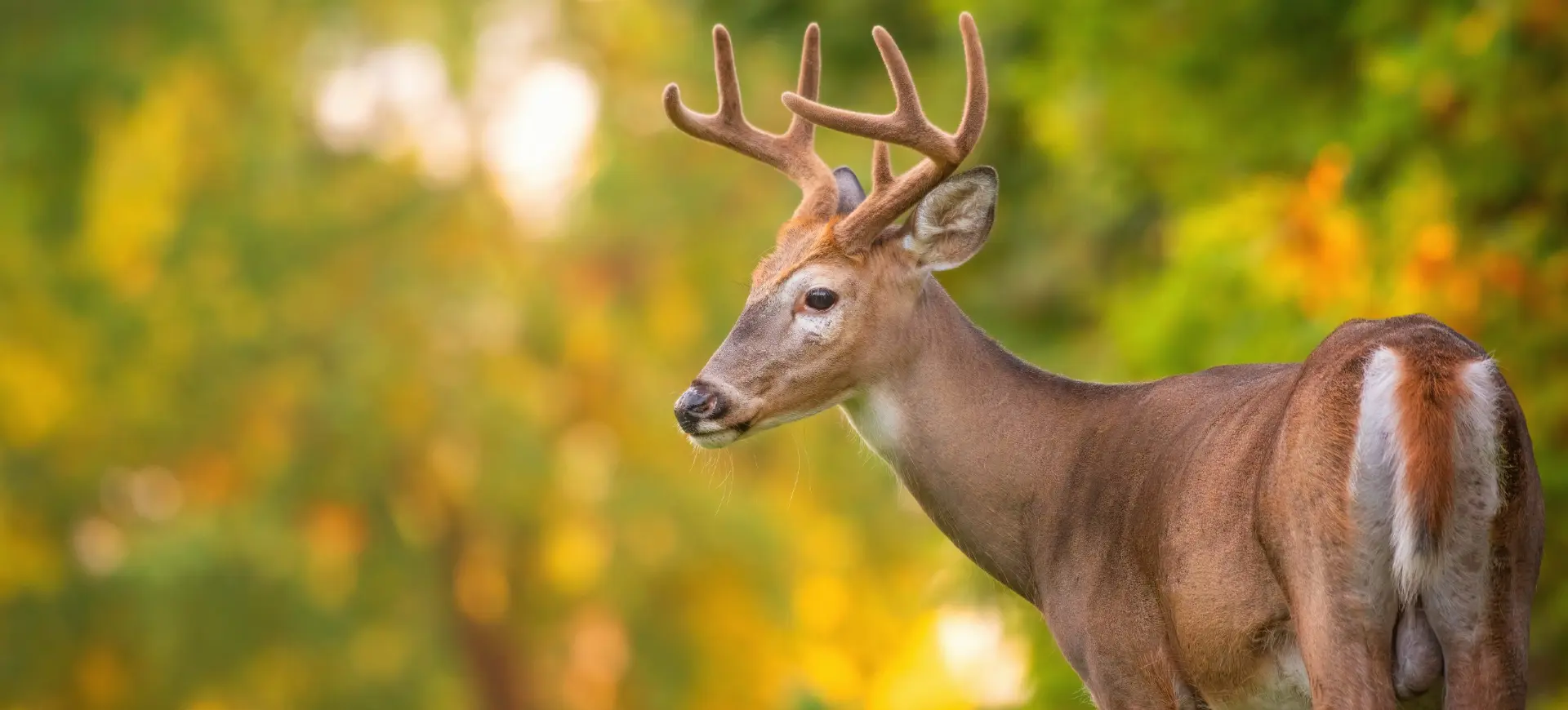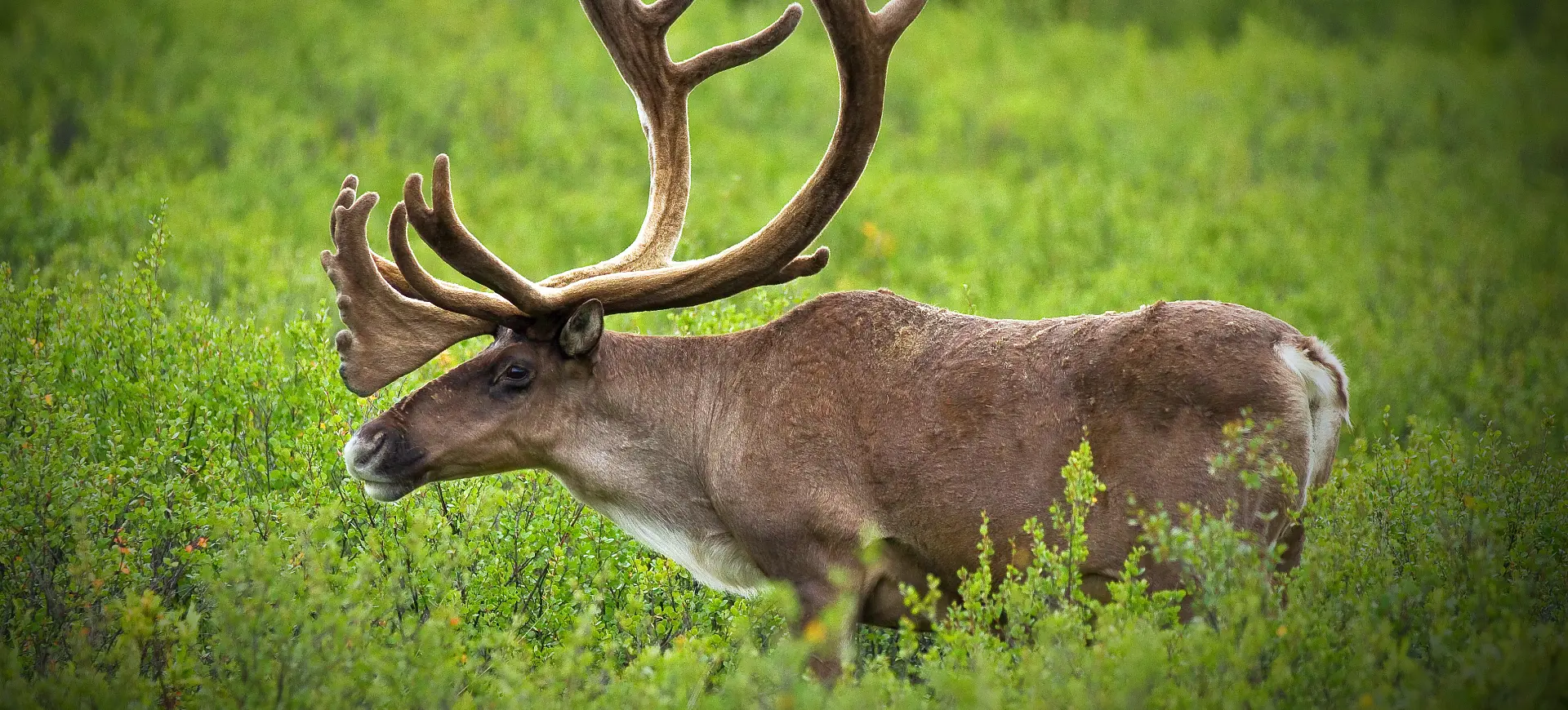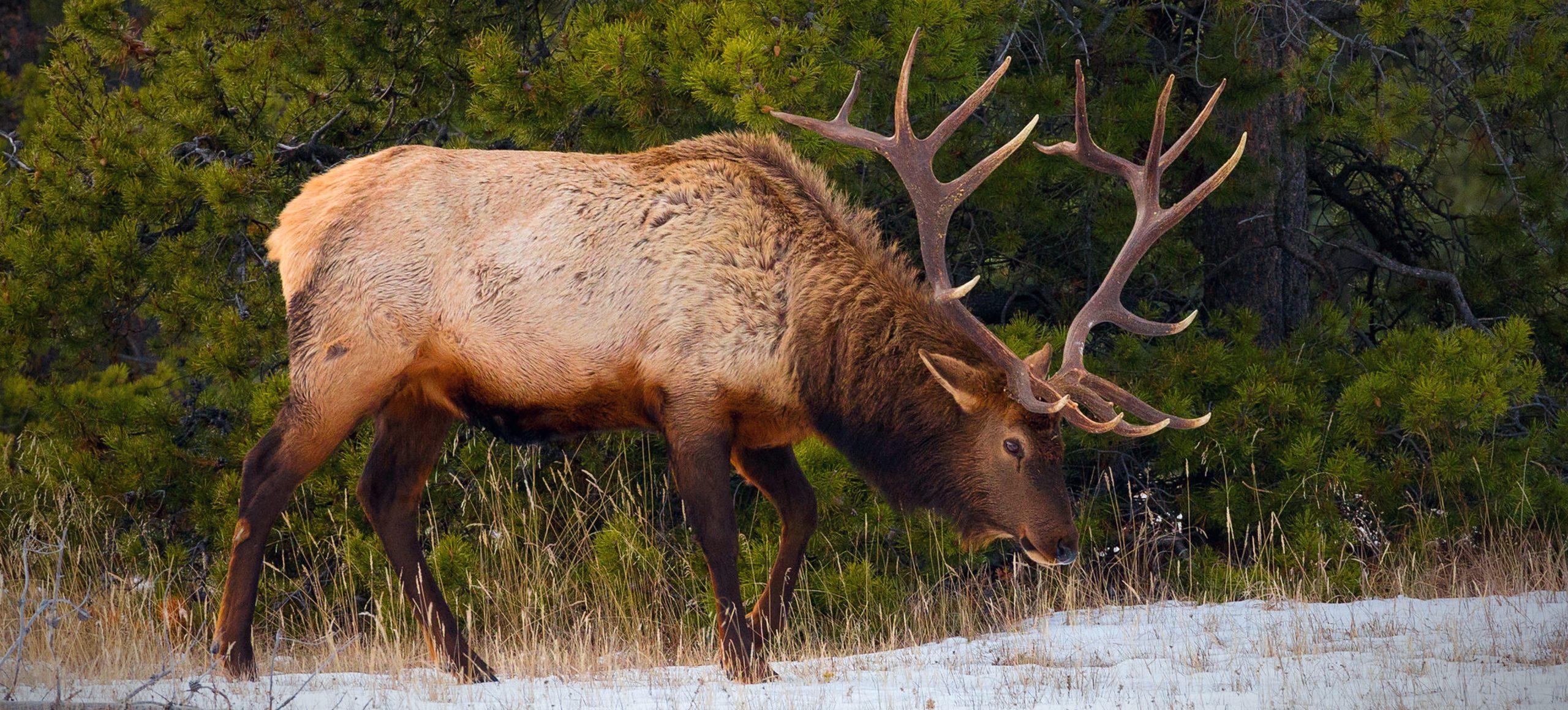Overview
The Tufted Deer (Elaphodus cephalophus) is a small, elusive deer species native to the high-altitude forests of central China and northeastern Myanmar. This species is easily recognizable by the distinct tuft of black hair on its forehead, giving it its common name. Tufted Deer are relatively small compared to other deer species, with adults typically standing around 20 inches tall at the shoulder. They are characterized by their shy and solitary nature, preferring dense understory vegetation where they can easily hide from predators.
The coat of the Tufted Deer is coarse and grayish-brown, which provides excellent camouflage in its forested habitat. Males possess small, stubby antlers often concealed by the tuft of hair, a unique feature among Deer. In addition to the tuft and antlers, males also have elongated canine teeth or tusks, which protrude from the upper lip and are used during mating season displays and territorial disputes. These deer are primarily crepuscular, most active during the twilight hours of dawn and dusk.
TufteDeerers are known for their secretive and elusive behavior, making them a relatively less studied species. They are generally quiet animals but can emit a bark-like sound when alarmed. Their diet primarily consists of leaves, twigs, fruits, and grasses, reflecting their adaptation to the dense forest environments. The Deer’s small size and agility aid in navigating through the thick underbrush of their habitat, allowing them to escape predators and forage efficiently.
Taxonomy
Kingdom
Phylum
Class
Order
Family
Genus
Species
Sub Species
Type
Physical Description:
Tufted Deer are relatively small, with adult males typically weighing between 37 and 110 pounds (17 and 50 kilograms) and females slightly smaller. They stand about 20 inches (50 centimeters) at the shoulder, with a body length ranging from 43 to 63 inches (110 to 160 centimeters). The most distinguishing feature of Tufted Deer is the prominent tuft of black hair on their forehead, which is particularly long in males. The coat is coarse, usually grayish-brown, aiding in camouflage; underparts and inner legs are lighter, often white.
Male Tufted Deer are notable for their short, unbranched antlers, usually about 4 inches (10 centimeters) long, often concealed beneath their hair tuft. Additionally, males possess elongated canine teeth, or tusks, that can grow up to 2.6 inches (6.5 centimeters) and are for display and defense during mating and territorial disputes. Females lack antlers and tusks and are slightly smaller and lighter than males. These physical attributes help the Tufted Deer to blend into its environment and navigate the rugged terrain of its habitat.

Lifespan: Wild: ~10 years || Captivity: ~15 years

Weight: Male: 37-110 lbs (17-50 kg) || Female: 33-88 lbs (15-40 kg)

Length: Male: 43-63 inches (110-160 cm) || Female: 40-60 inches (100-150 cm)

Height: Male: 20 inches (50 cm) || Female: 18 inches (45 cm)

Top Speed: 30 mph (48 km/h)
Characteristic:
Native Habitat:
Tufted Deer inhabit high-altitude forests and bamboo groves in central China and northeastern Myanmar, typically found at elevations ranging from 1,600 to 14,100 feet (500 to 4,300 meters). These dense, moist mountainous forests provide ample cover and food sources, crucial for their survival and reproductive success. The challenging terrain of their habitat, characterized by limited visibility and rugged landscape, is navigated easily by their small size and agility. Their preference for dense vegetation likely serves as a strategy to evade predators and minimize human disturbance.
The habitat of the Tufted Deer also includes areas with thick underbrush, which offers additional protection and foraging opportunities. Seasonal changes in their habitat, such as variations in plant growth and snow cover, influence their movement and feeding patterns. They are well-adapted to the cold temperatures of their high-altitude environment, with their thick coat providing necessary insulation. The fragmentation of their habitat due to human activities poses a significant threat to their survival, emphasizing the need for conservation efforts in these regions.
Climate Zones:
Biomes:
Biogeographical Realms:
Continents:
Countries:
Diet:
Diet & Feeding Habits:
Tufted Deer are primarily browsers, feeding on leaves, twigs, fruits, and grasses available in their forest habitat. They adapt their diet to the seasonal availability of different plant materials, often feeding on vegetation that other herbivores might overlook. Foraging typically occurs alone, and these Deer are known to be relatively silent, except when alarmed, they may emit a bark-like sound. Their solitary and discreet foraging behavior is a crucial survival strategy to avoid predators.
The Tufted Deer’s digestive system is adapted for processing a fibrous, plant-based diet. As ruminants, they chew cud regurgitated from a specialized stomach, which allows for more efficient nutrient extraction. This diet reflects their adaptation to the dense forests they inhabit, where they must efficiently utilize the available vegetation. Their crepuscular feeding habits align with their most active periods during twilight hours.
Mating Behavior:
Mating Description:
The Tufted Deer has a polygynous mating system, where dominant males mate with multiple females during the breeding season. Males establish territories, which they defend against other males, often using their elongated canine teeth in aggressive displays and fights. The breeding season typically occurs in late autumn and early winter. During this time, males become more vocal and active in marking their territory with scent from glands near their eyes.
Females give birth to a single fawn after a gestation period of about 6 months, usually in dense cover to protect the young from predators. The presence of the tuft and tusks in males plays a role in sexual selection, with larger and more prominent features being more attractive to females. These characteristics and the male’s ability to defend a territory successfully influence mating success. The fawns are born well-developed and can stand and walk shortly after birth, which is crucial for their survival in the predator-rich environment of the forests.
Reproduction Season:
Birth Type:
Pregnancy Duration:
Female Name:
Male Name:
Baby Name:
Social Structure Description:
The Tufted Deer is generally solitary, although they may be seen in pairs or small family groups. They are territorial, with males establishing and defending territories encompassing several females’ home ranges. Social interactions are mostly limited to the breeding season, with males competing for access to females. Their solitary nature and preference for dense underbrush make them elusive and difficult to observe in the wild.
Tufted Deer communicate using vocalizations, scent marking, and body language. The presence of tusks in males is used for display and aggression during territorial disputes and mating competitions. In their natural habitat, these Deer have few social interactions outside the mating season, preferring to live and forage alone. This solitary behavior is likely an adaptation to their dense forest environment, where being less visible can be a key to survival.
Groups:
Conservation Status:
Population Trend:
The Tufted Deer population is declining, largely attributed to habitat loss and fragmentation, a common issue for many wildlife species today. Accurately determining their numbers in the wild is challenging due to the species’ elusive nature and their habitat’s remote and inaccessible nature. Despite these difficulties, there are areas of hope; in several protected regions, stable populations of Tufted Deer have been identified, indicating potential success in conservation efforts within these sanctuaries. However, the stability of these populations remains contingent on ongoing and effective habitat protection measures.
Habitat destruction, primarily driven by deforestation for agricultural expansion, logging activities, and the encroachment of human settlements, is the foremost threat to the Tufted Deer. This loss of habitat reduces their living space and leads to population fragmentation, further exacerbating their vulnerability by increasing the risks of genetic isolation and local extinctions. In addition to habitat challenges, hunting for their meat and fur poses a significant threat in some regions despite legal protections. The cumulative impact of these factors places the Tufted Deer at a critical point, necessitating urgent and comprehensive conservation actions to ensure their survival.
Population Threats:
Habitat loss and fragmentation constitute the primary threats to the Tufted Deer, critically impacting their survival. The extensive deforestation for timber, agriculture, and the expansion of human settlements have drastically reduced and fragmented their natural habitats. Such fragmentation leads to isolated deer populations, increasing their vulnerability to genetic bottlenecks and heightening the risk of local extinctions. The continuous loss of habitat diminishes their living space and challenges their ability to thrive in their traditional environments.
In addition to habitat concerns, hunting poses a significant threat to the Tufted Deer, particularly for local consumption and traditional medicinal uses. Despite legal protections in many regions, enforcement is often lax, leading to continued illegal hunting practices. Compounding this issue is the competition with livestock, which strains the already limited food resources and habitat available to the Tufted Deer. These combined pressures significantly contribute to the declining population trend of this species and necessitate urgent conservation attention.
Conservation Efforts:
The Tufted Deer’s conservation efforts focus on addressing the key challenges of habitat loss and hunting. Protecting and managing their natural habitats, particularly in protected areas and nature reserves, forms the cornerstone of these efforts. Reforestation and rehabilitating degraded habitats are crucial initiatives aimed at expanding and enhancing the living spaces of these deer. Furthermore, there is a significant emphasis on enforcing hunting regulations to safeguard the species from illegal poaching and to mitigate one of their most immediate threats.
In addition to direct conservation actions, there is an increasing focus on research and awareness programs. Understanding the Tufted Deer’s ecological needs, behavior, and population dynamics is essential for formulating effective conservation strategies. Governments and conservation organizations are working to raise public awareness about the deer’s plight and the importance of their preservation. Collaborative efforts involving local communities, conservationists, and policymakers are key to ensuring the long-term survival of the Tufted Deer in their natural habitats.
Additional Resources:
Fun Facts
- The Tufted Deer’s elongated canine teeth or tusks are a rare feature among deer species and are more commonly associated with musk deer.
- The Tufted Deer’s ability to bark like a dog when alarmed is unique among Deer and serves as a warning signal to others in the area.
- They are one of the few deer species adapted to live in high-altitude forest environments, demonstrating remarkable adaptability and resilience.
- The distinctive tuft of hair on the forehead of the Tufted Deer is more pronounced in males and is a distinguishing characteristic.
- Despite their small size, Tufted Deer can jump and run swiftly, which helps them escape predators in their dense forest habitat.
- The diet of the Tufted Deer changes seasonally, depending on the availability of different vegetation types in their mountainous habitat.
- Tufted Deer are excellent swimmers, a skill that helps them cross rivers and streams in their forested environment.
- The gestation period of the Tufted Deer is one of the longest among deer species, reflecting the challenges of raising offspring in a harsh environment.
- Due to their elusive nature, much of the Tufted Deer’s behavior and social structure remains a mystery to scientists.
- The Tufted Deer plays a significant role in the folklore and culture of several indigenous communities in its native habitat.




